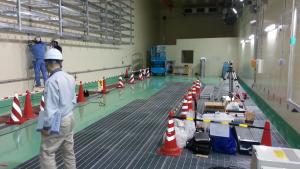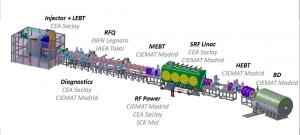LIPAc accelerator prototype installation begins in Japan
After the successful performance during the individual system tests carried out at CEA (Saclay) in November 2012, the ion source and the low energy beam transfer have been delivered to Rokkasho and the installation activities have now started. An upgrade of the survey network in the accelerator hall was deemed necessary following a study by F4E to meet the alignment precision of 0.1 mm of certain components; an essential factor given the unprecedented beam current. The fiducialization upgrade will install 120 new additional fiducials and a permanent pillar, which will allow the placement of the laser tracker anywhere in the accelerator hall within uncertainties below 0.03 mm. This activity will be performed in Rokkasho by a team led by Luigi Semeraro (F4E) and the collaboration of JAEA during the third week of June.



